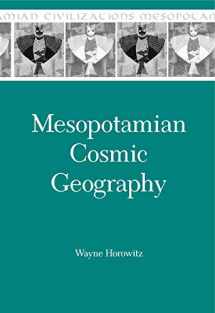
Mesopotamian Cosmic Geography (Mesopotamian Civilizations)
Book details
Summary
Description
In this comprehensive study, Horowitz examines all of the extant Mesopotamian texts (both Sumerian and Akkadian) relating to the ideas of the physical universe and its constituent parts (Heaven, Earth, subterranean waters, underworld). The author shows that the Mesopotamian view of the universe was at once cohesive as well as discordant and deficient, while remaining fairly constant over more than 2,500 years.
Horowitz first surveys the various sources for Mesopotamian cosmic geography, including various mythological and literary texts, as well as the famous “Babylonian Map of the World” and various astrological and astronomical texts. The universe was built by the gods in earliest times and was thought to be held together by cosmic bonds. Given this general notion, there is nevertheless significant variety in the inclusion or omission of various elements of the picture in texts of different genres and from different periods. In addition, the available evidence leaves a number of problems unsolved. What are the bounds of the universe? What is beyond the limits of the universe? In the second section of the book, Horowitz then discusses each of the various regions and their names in various locales and time periods, drawing on the disparate sources to show where there is coherence and where there is difference of perspective. In addition, he discusses all of the names for the different parts of the universe and examines the geographies of each region.
Of importance for both Assyriologists and those interested in the history of ideas, particularly the cosmologies of the ancient Near East.


We would LOVE it if you could help us and other readers by reviewing the book
Book review



